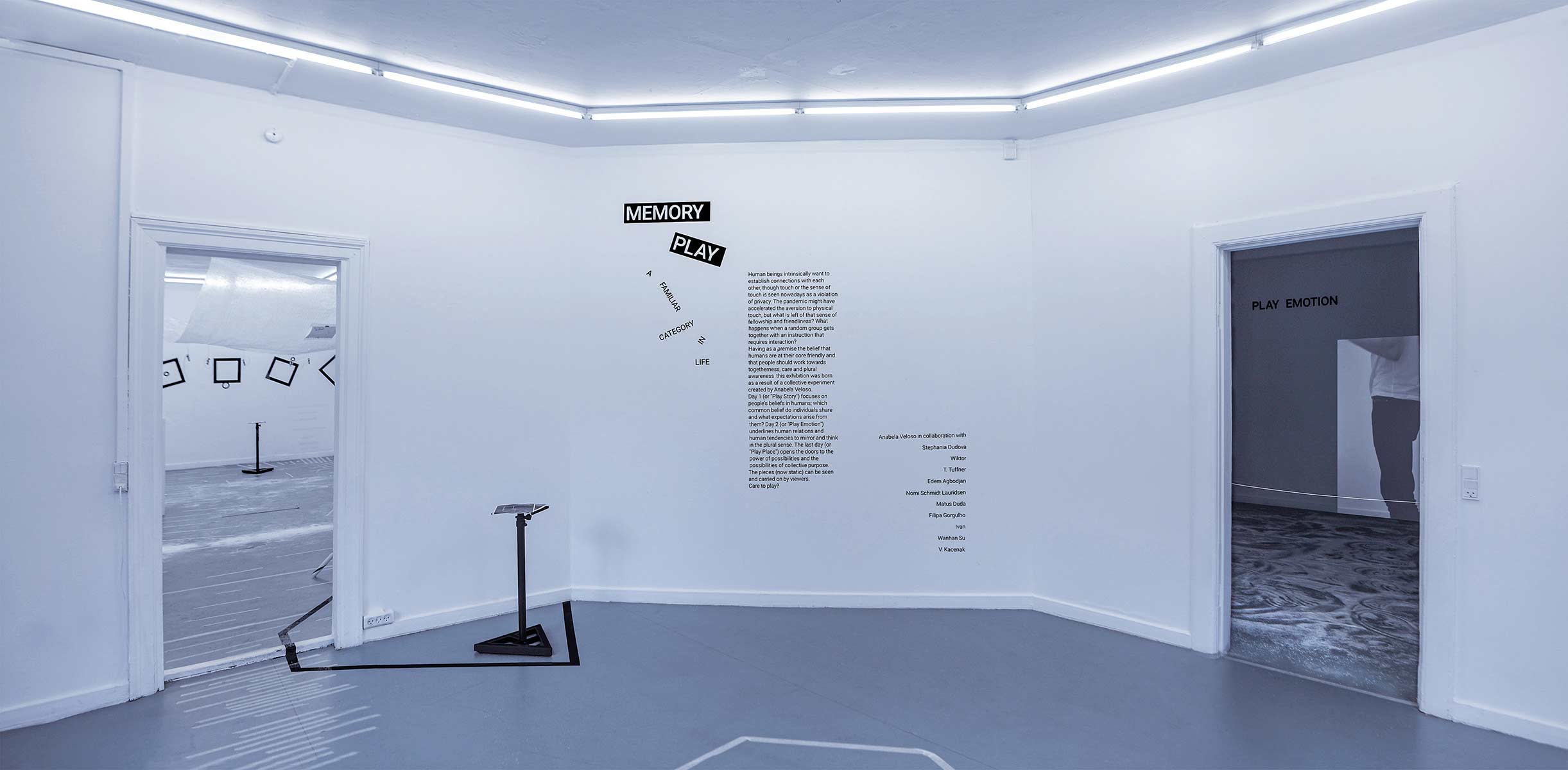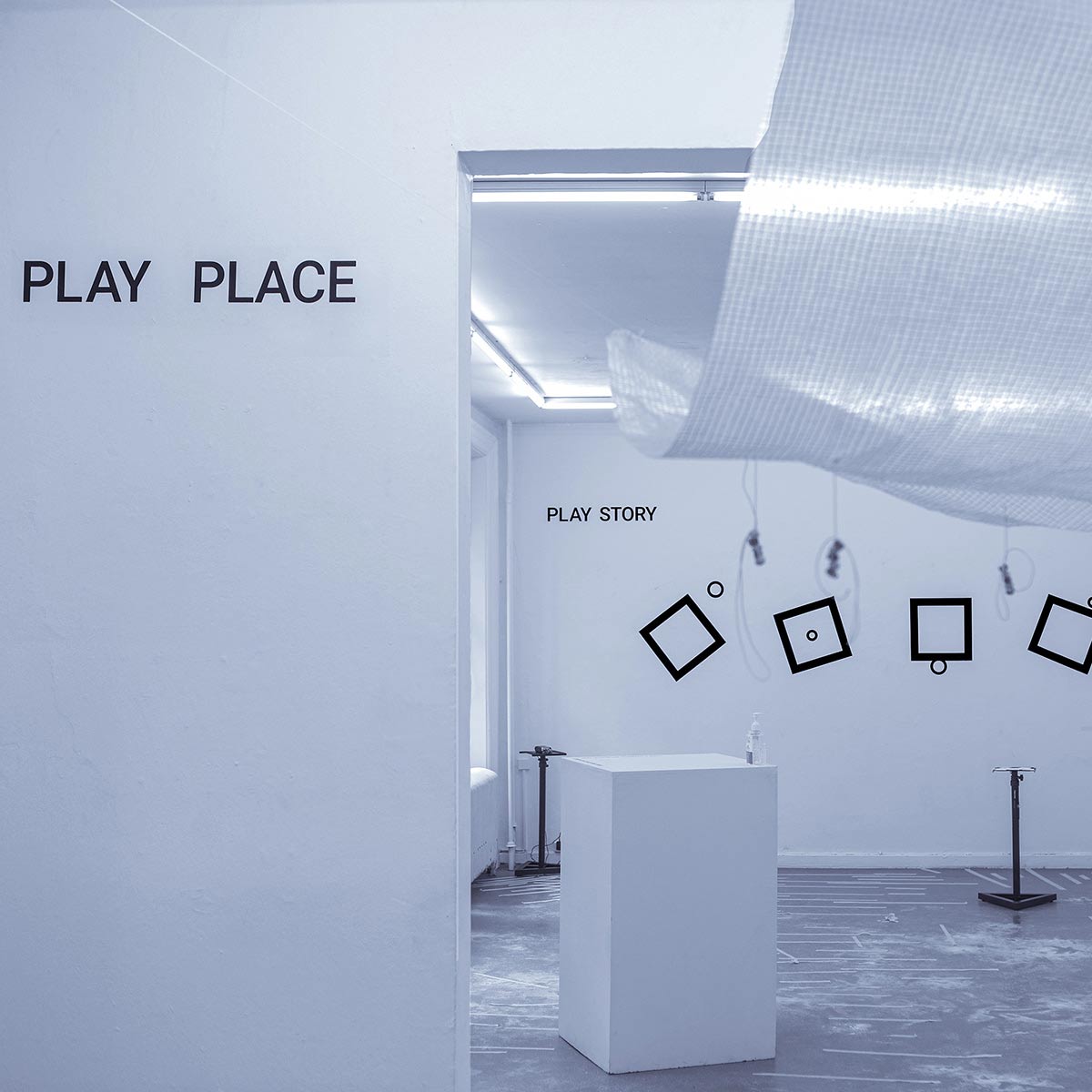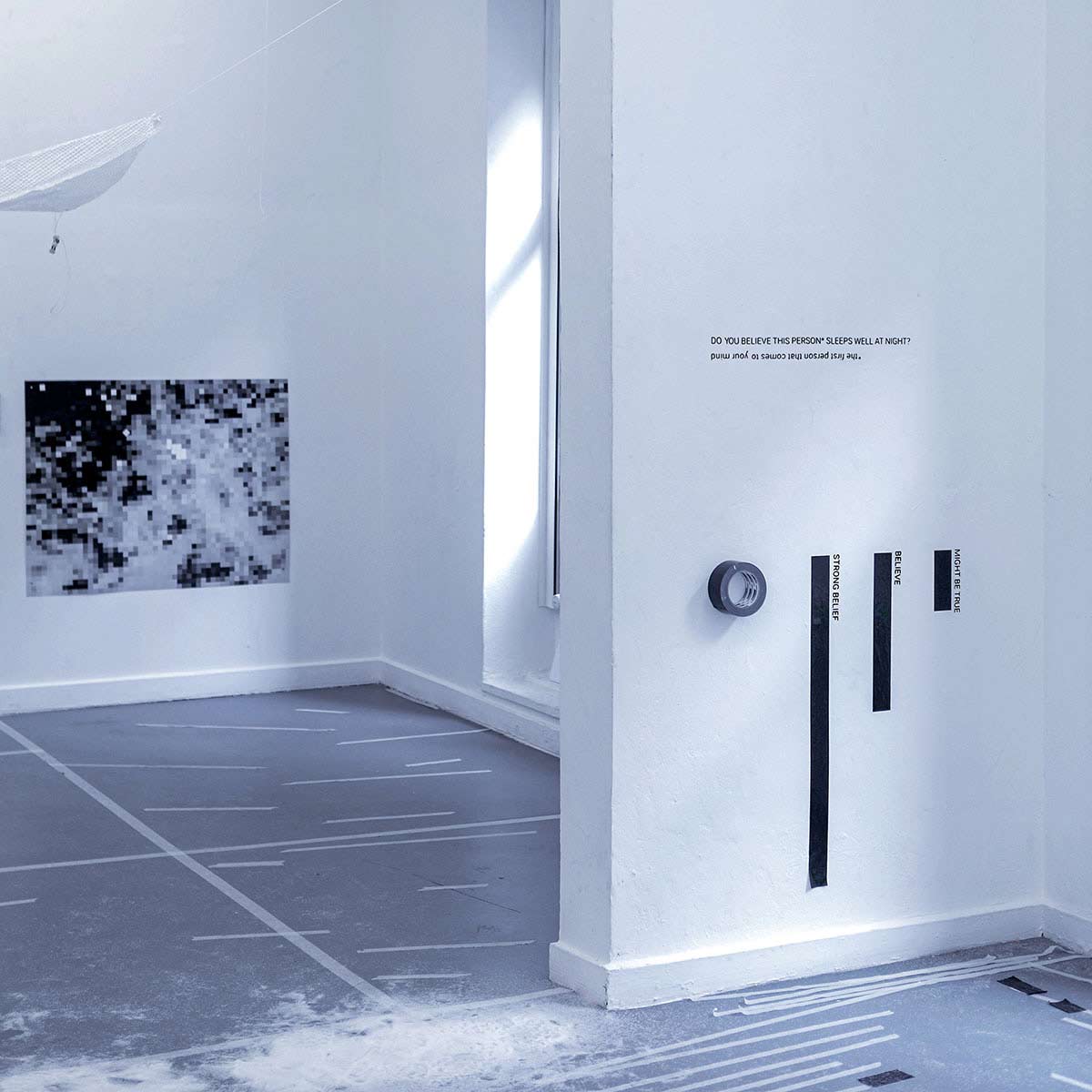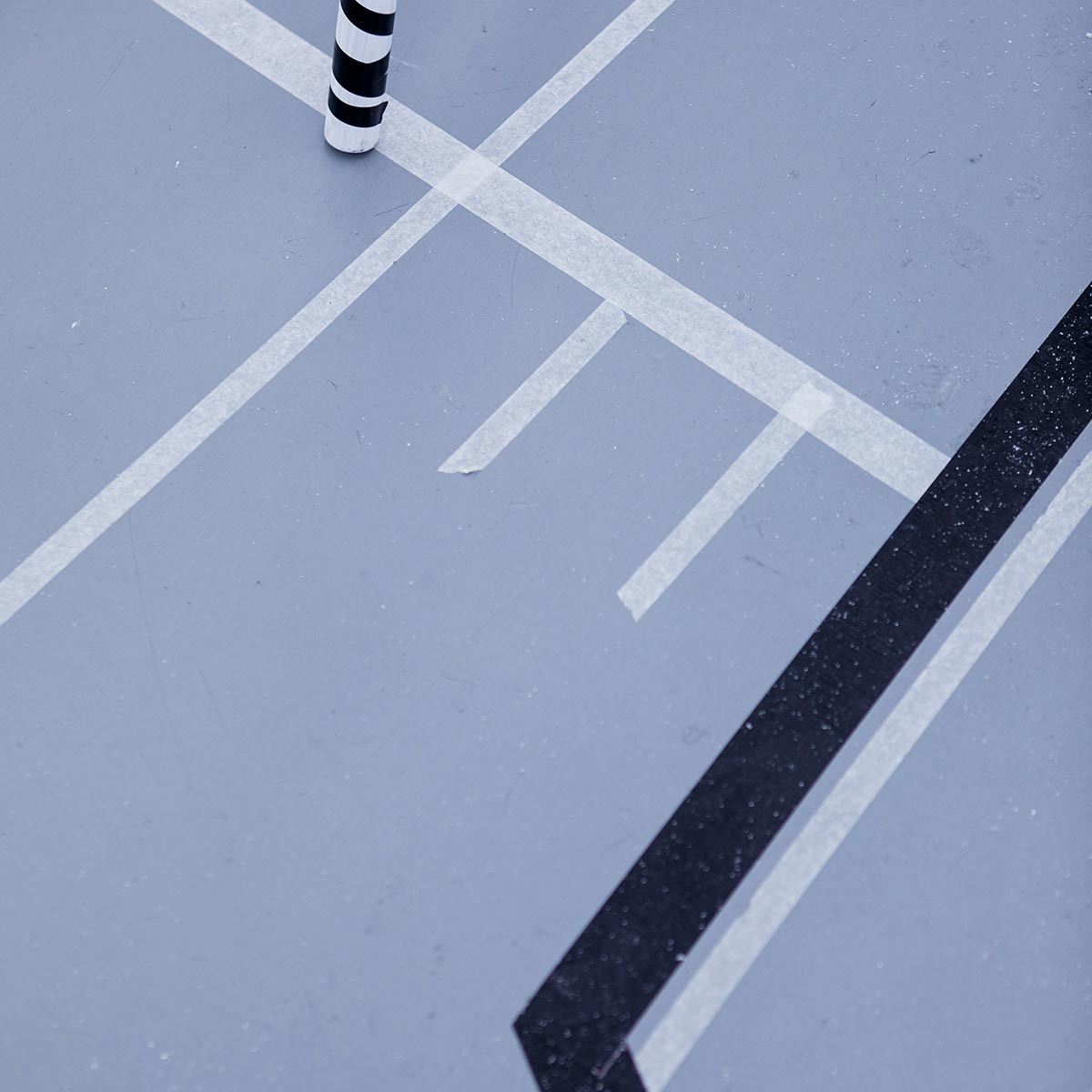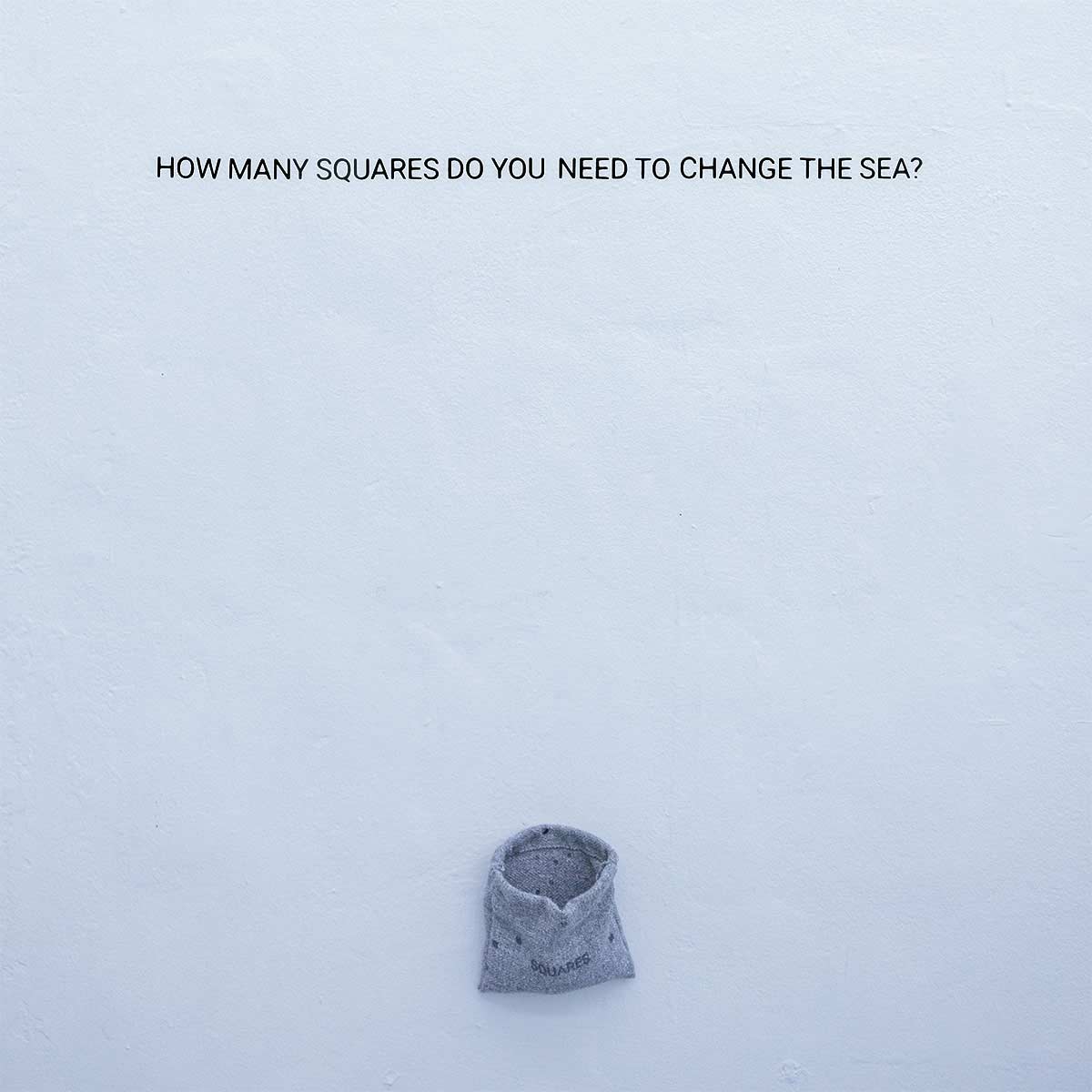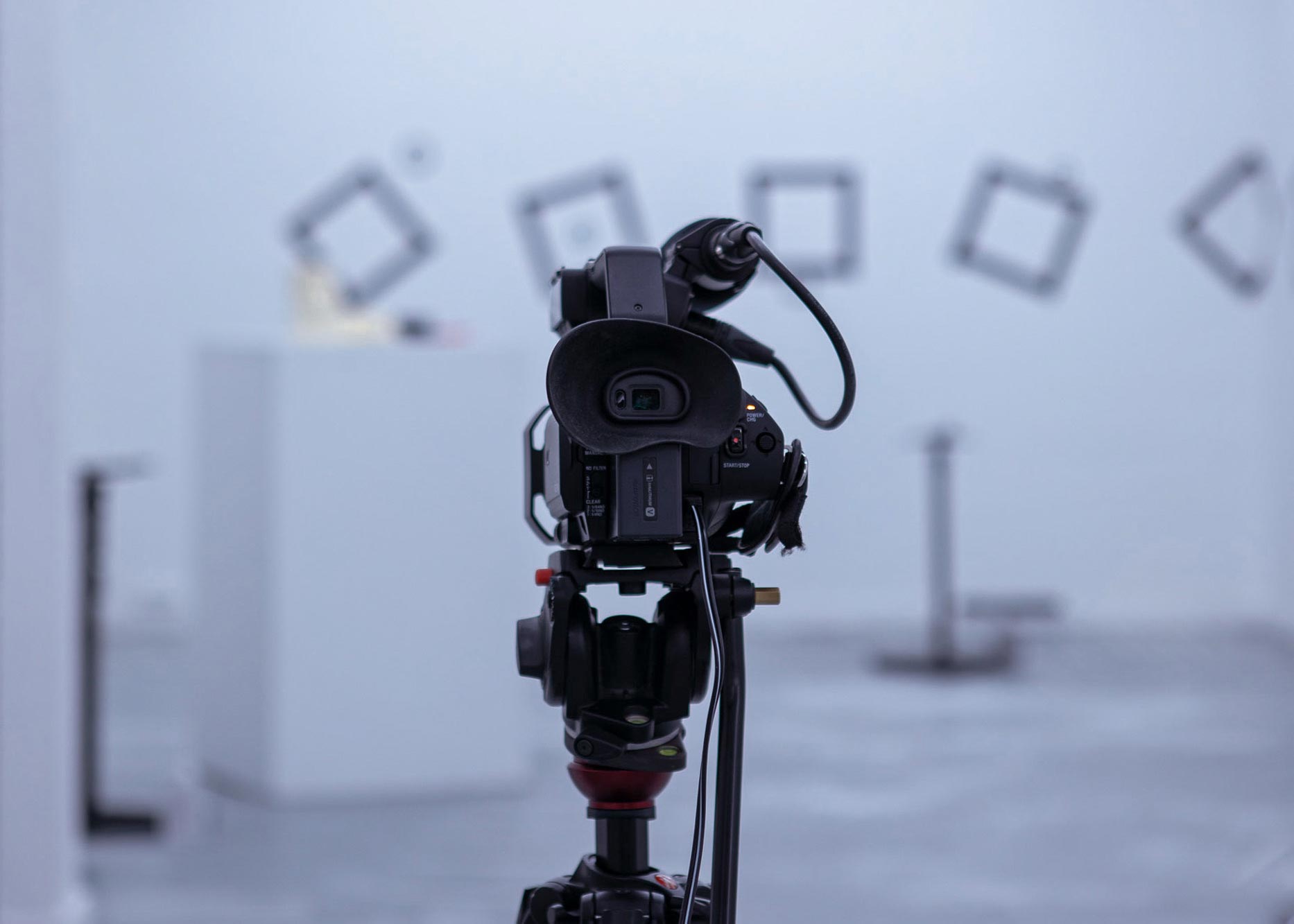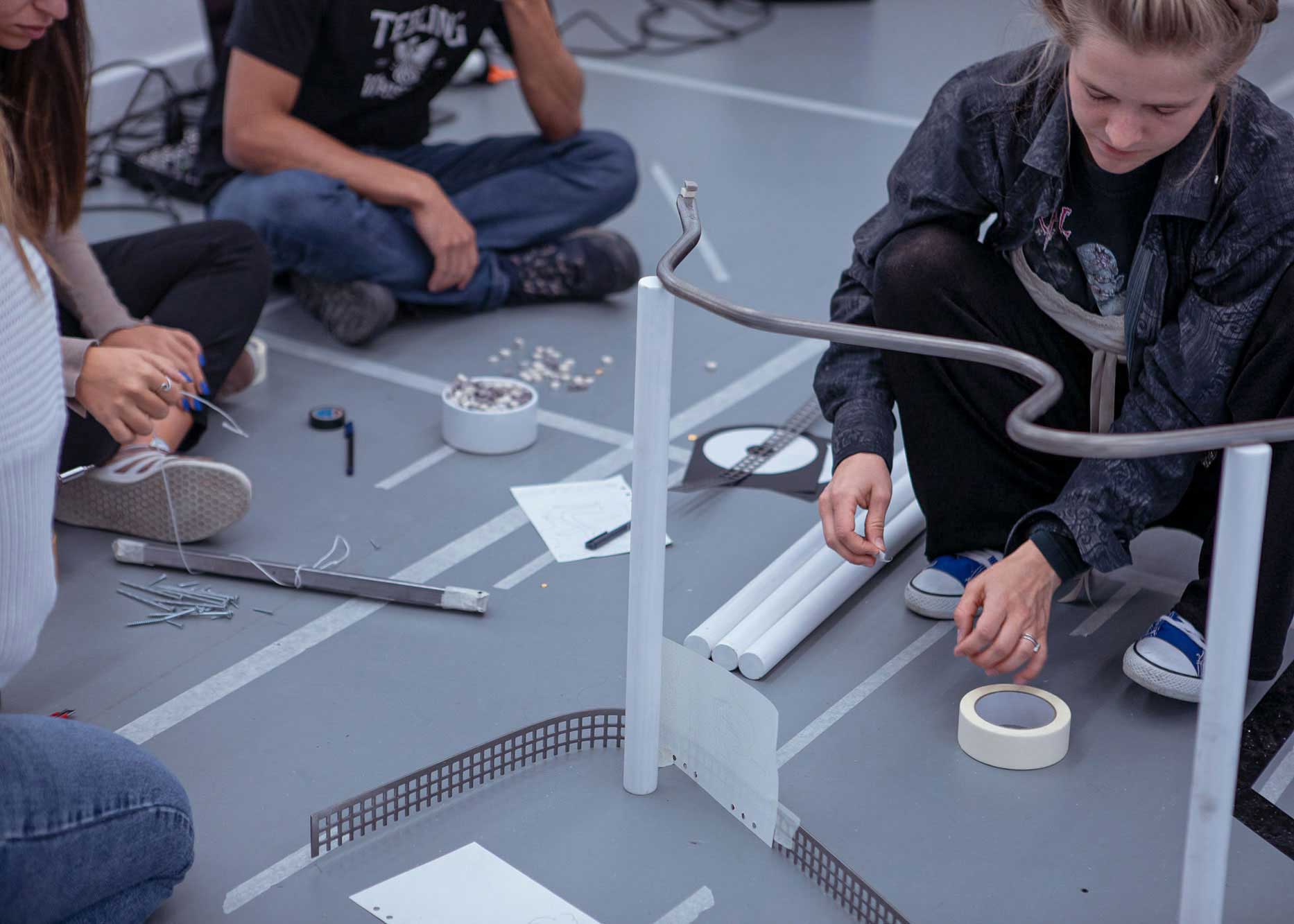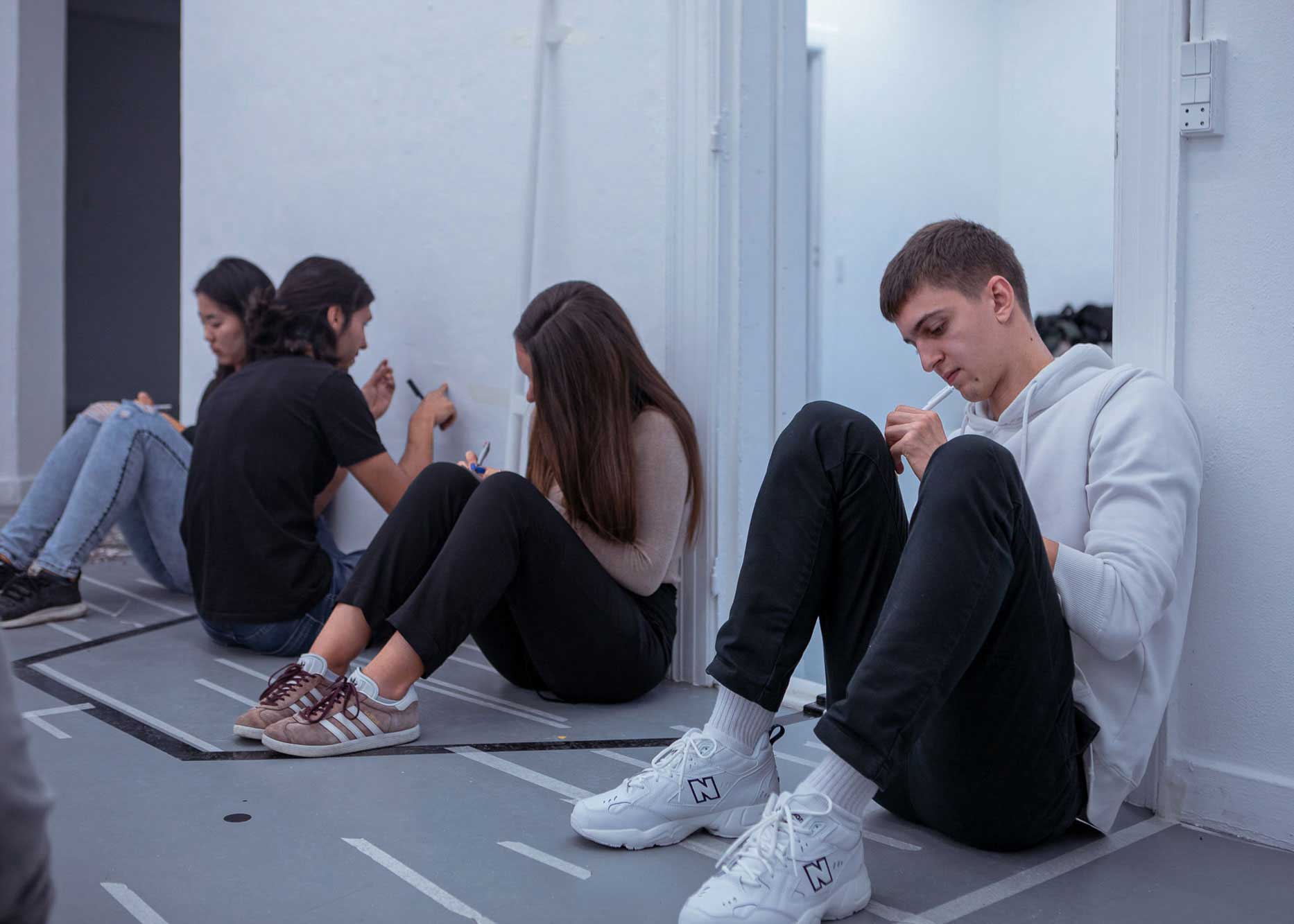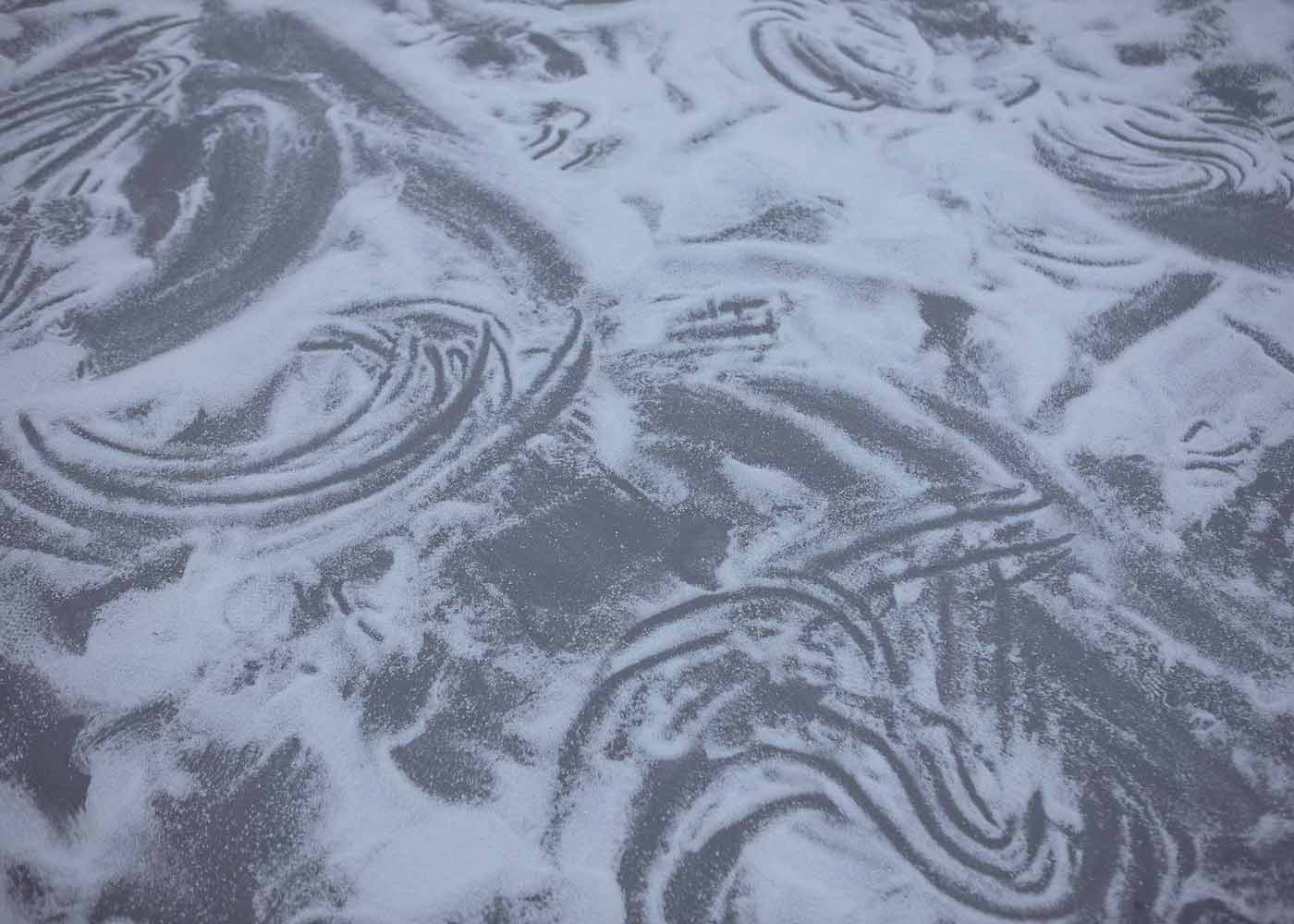Memory Play a familiar category in life

-
Type
workshop + exhibition
-
in collaboration with
Stephania Dudova, Wiktor, T. Tuffner, Edem Agbodjan, Nomi Schmidt Lauridsen, Matus Duda, Filipa Gorgulho, Ivan, Wanhan Su and V. Kacenak
-
Size
4 white rooms
-
YEAR
2020
The covid-19 pandemic might have accelerated the aversion to physical touch, classifying it as a violation of privacy, but what is left of that sense of fellowship and friendliness? What happens when a random group gets together with instructions that require interaction? Having as a premise the belief that humans are at their core friendly and that people should work towards togetherness, care, and plural awareness, this exhibition shares traces of such collective play-experiment.
Play Story, Play Emotion, Play Place
Divided into 3 suggestions of play on a 3-day workshop, the participants engage in a series of games that guide them from the singular-biased-individual to a responsible-plural. Play Story, Play Emotion, and Play Place are the 3 suggestions being played and experimented with.
Play Story deals with people's beliefs in humans, common convictions individuals share, and expectations and disappointments that arise from them. One of the games played under this type of play is Belief Length. Belief Length is played with 1 roll of tape per person and 43 questions. All questions point to awareness of judgment towards the other, starting with "Do you believe this person...". The game ends when the 43rd question asks "Do you believe this person would like you to invite them for a cup of tea?" and a tea break is made.
Play Emotion works with human relations and tendencies to mirror and think in the plural sense. Circling Objects, a game under this type of play, is divided into 3 moments; the first two should be done in pairs and the third with the whole group, ending when time runs out. This game has circling as the main activity, meaning there is always one thing being focused on and shared with.
On the last day, the artist's influence was minimal, requesting actions and decisions to be solved and made as a group. Play Place considers the power of possibilities when choosing purposes consciously and collectively. The game Changing Seas starts with one grey-scaled photograph looking like pixel squares and one bag of equally grey-scaled cutout squares. This game tells that the photo is a sea and invites the group to modify the image using the bag of squares and a collective consensus.
On the 4th day, the traces left by the human players can be seen and carried on by visitors of the exhibition.
